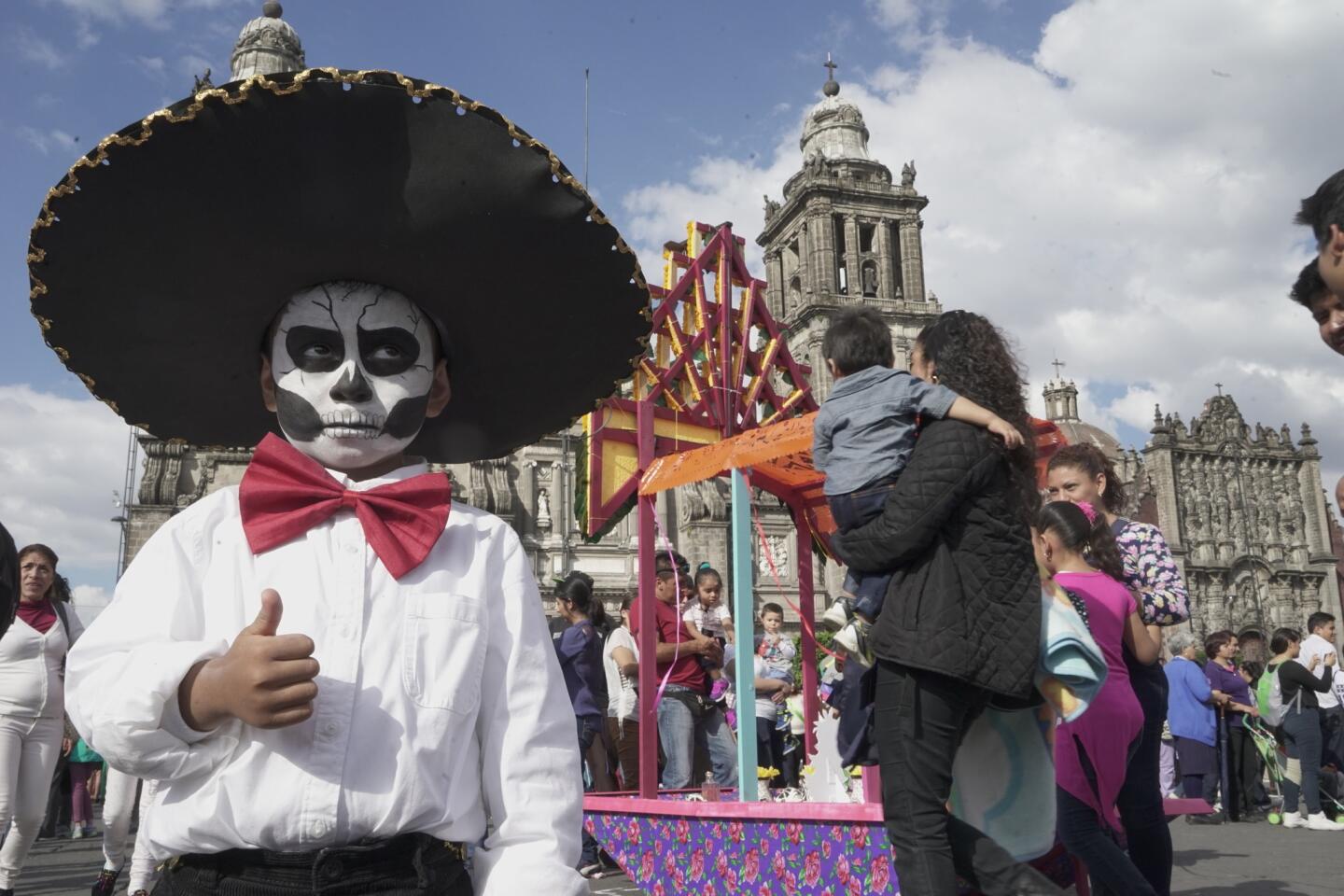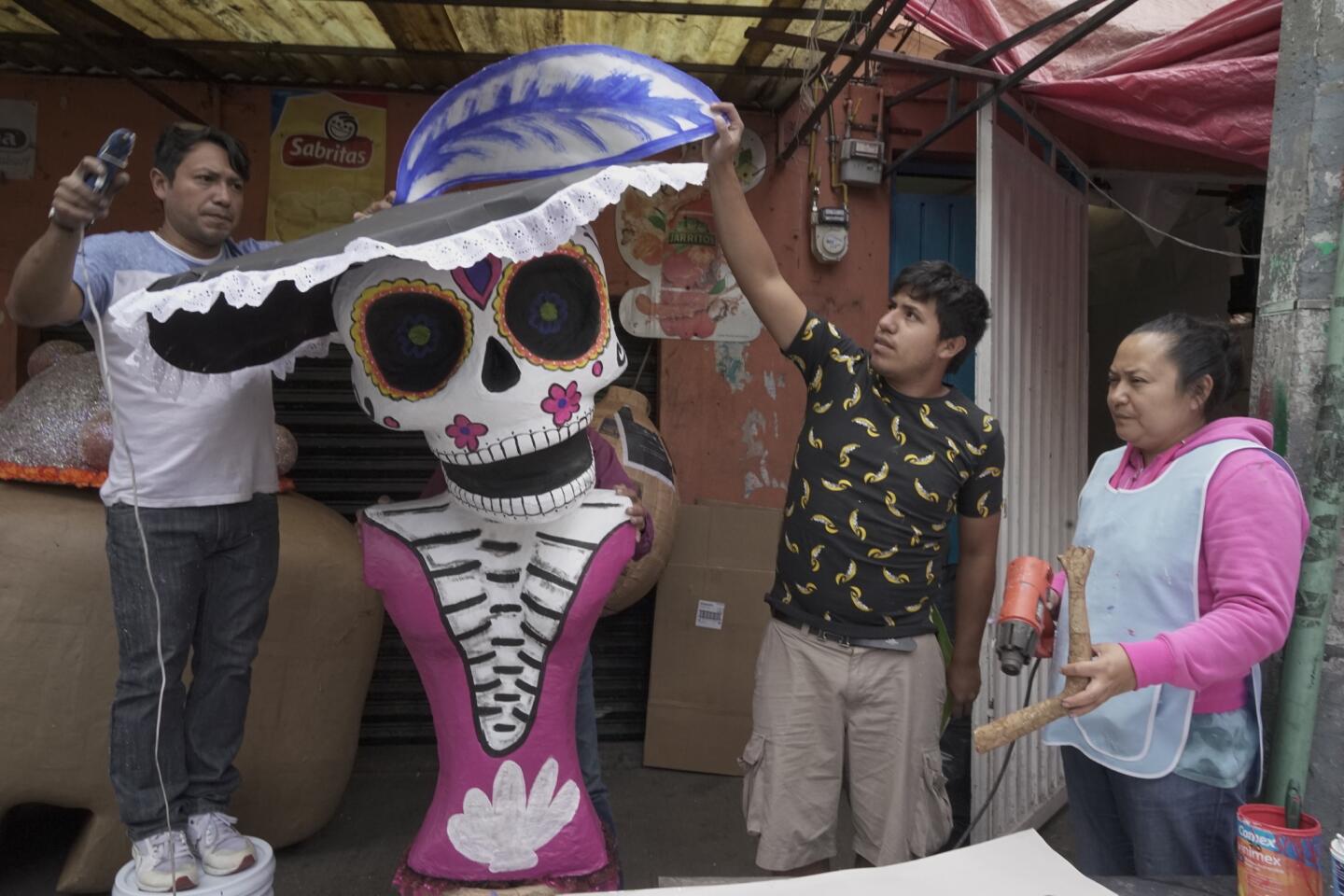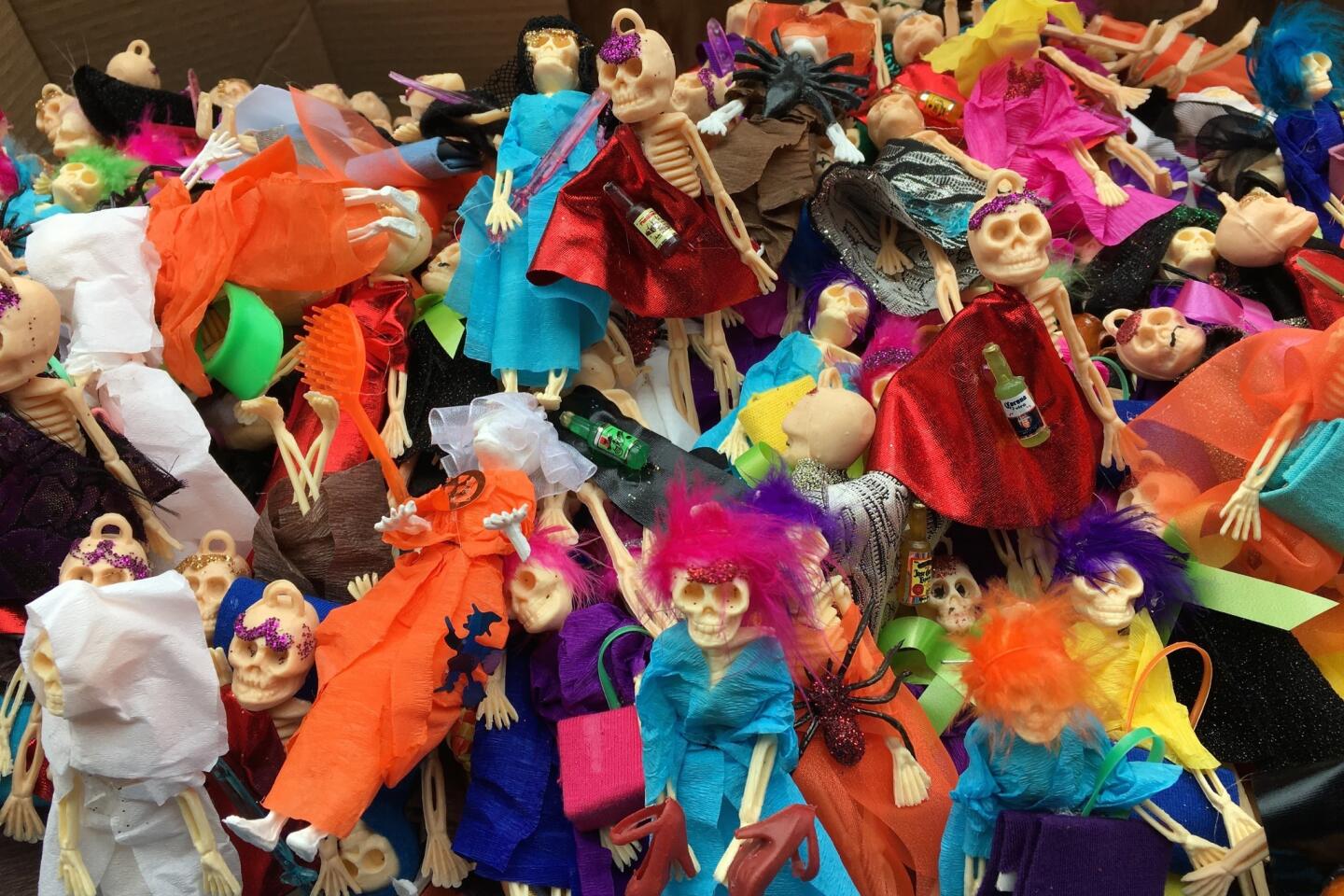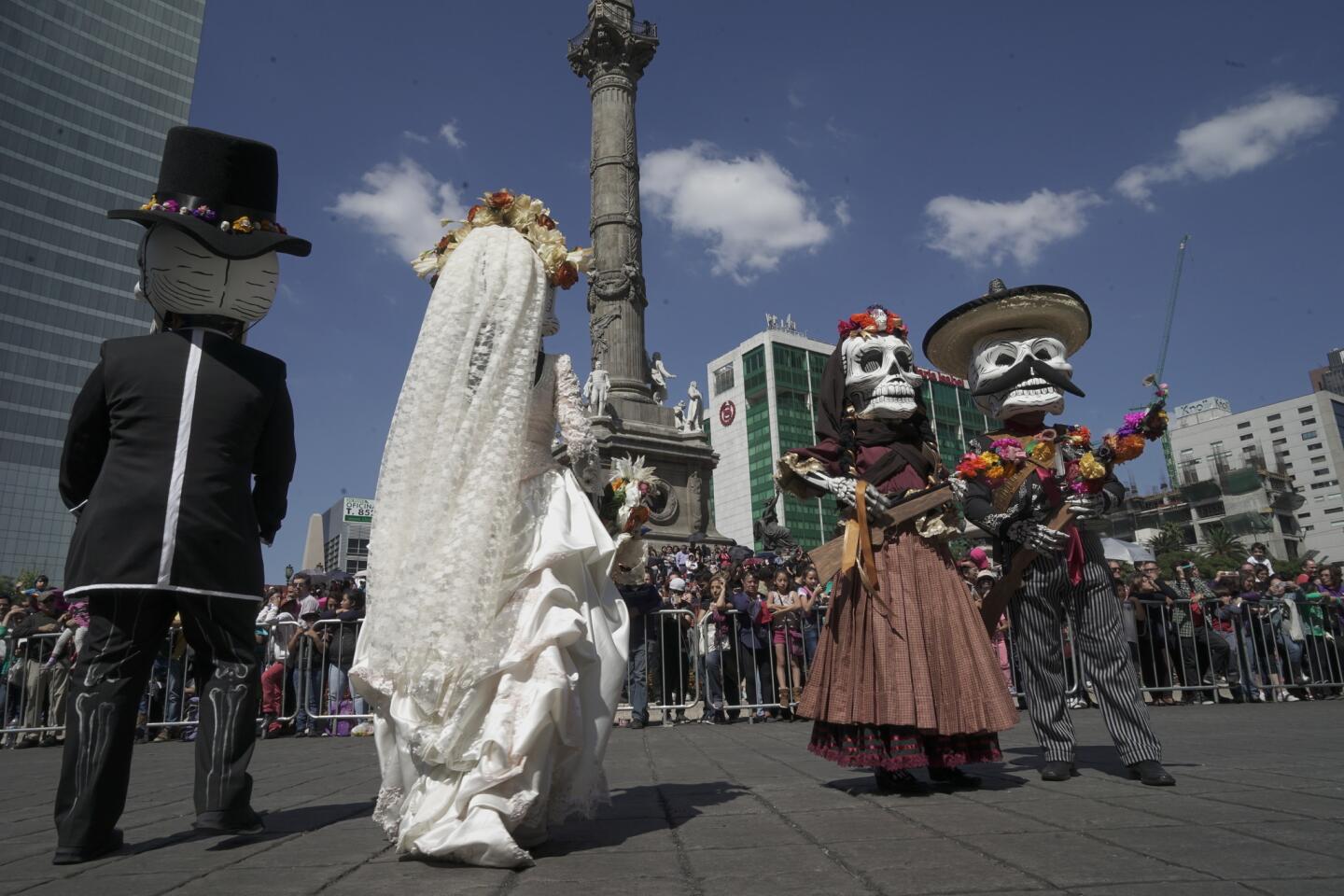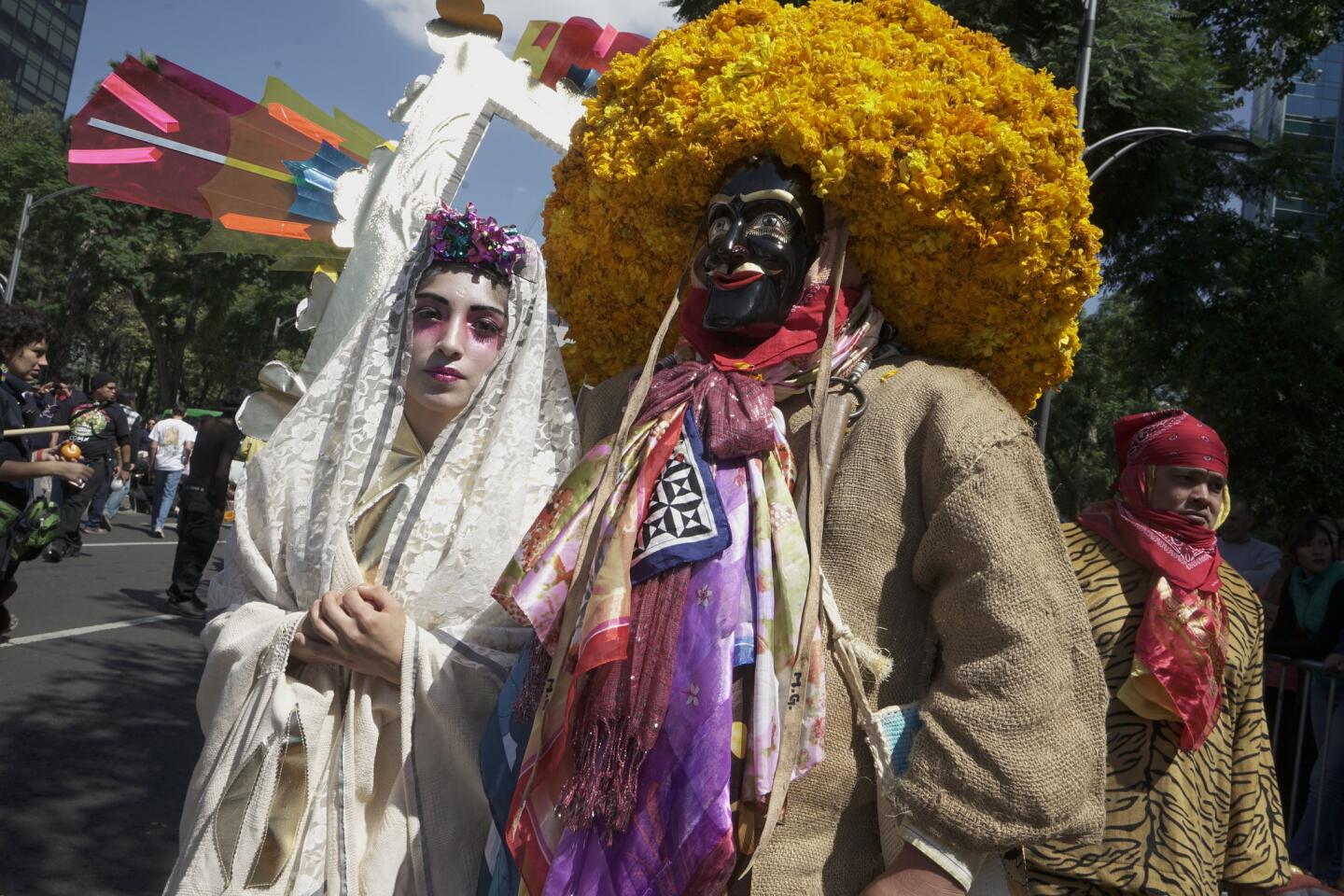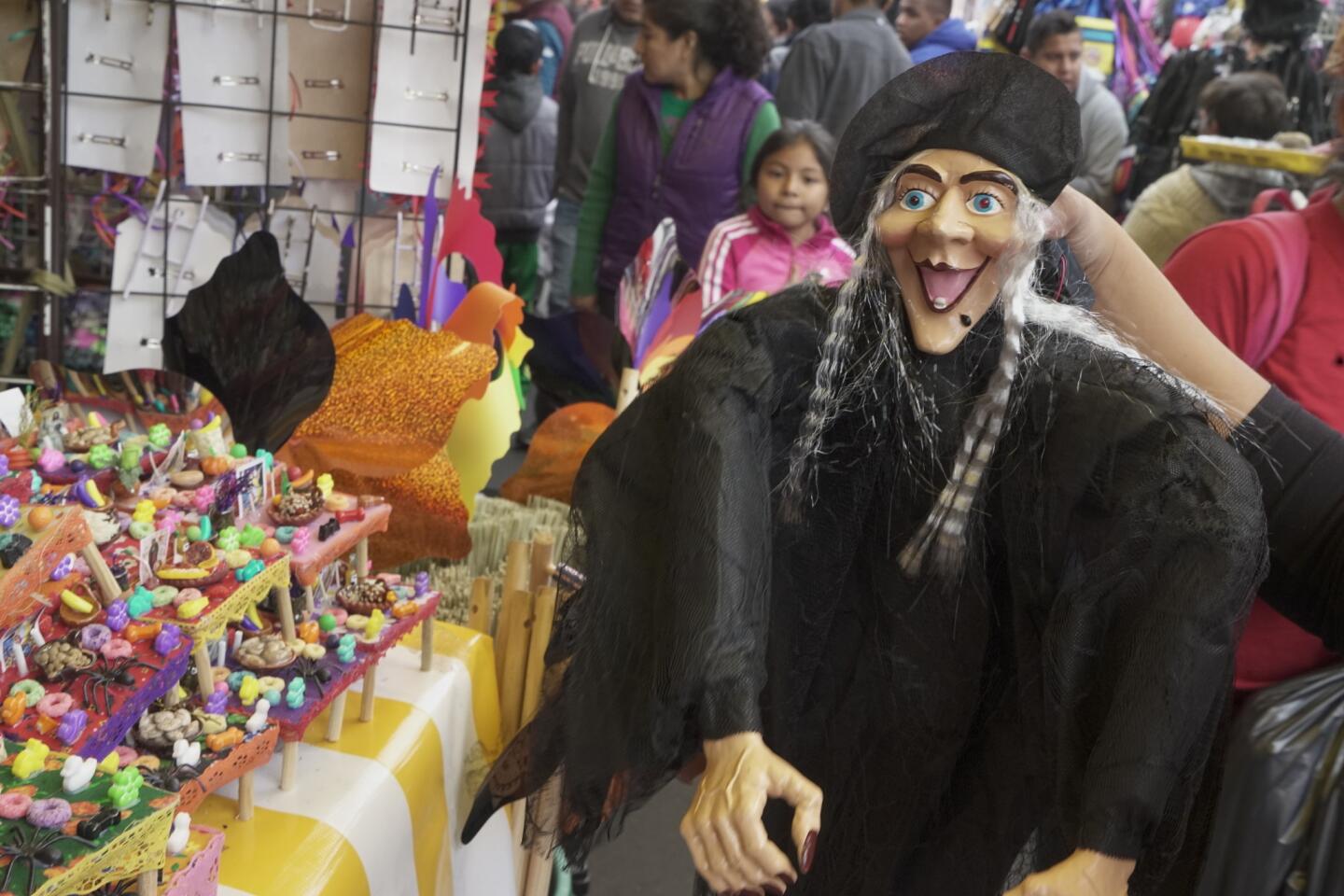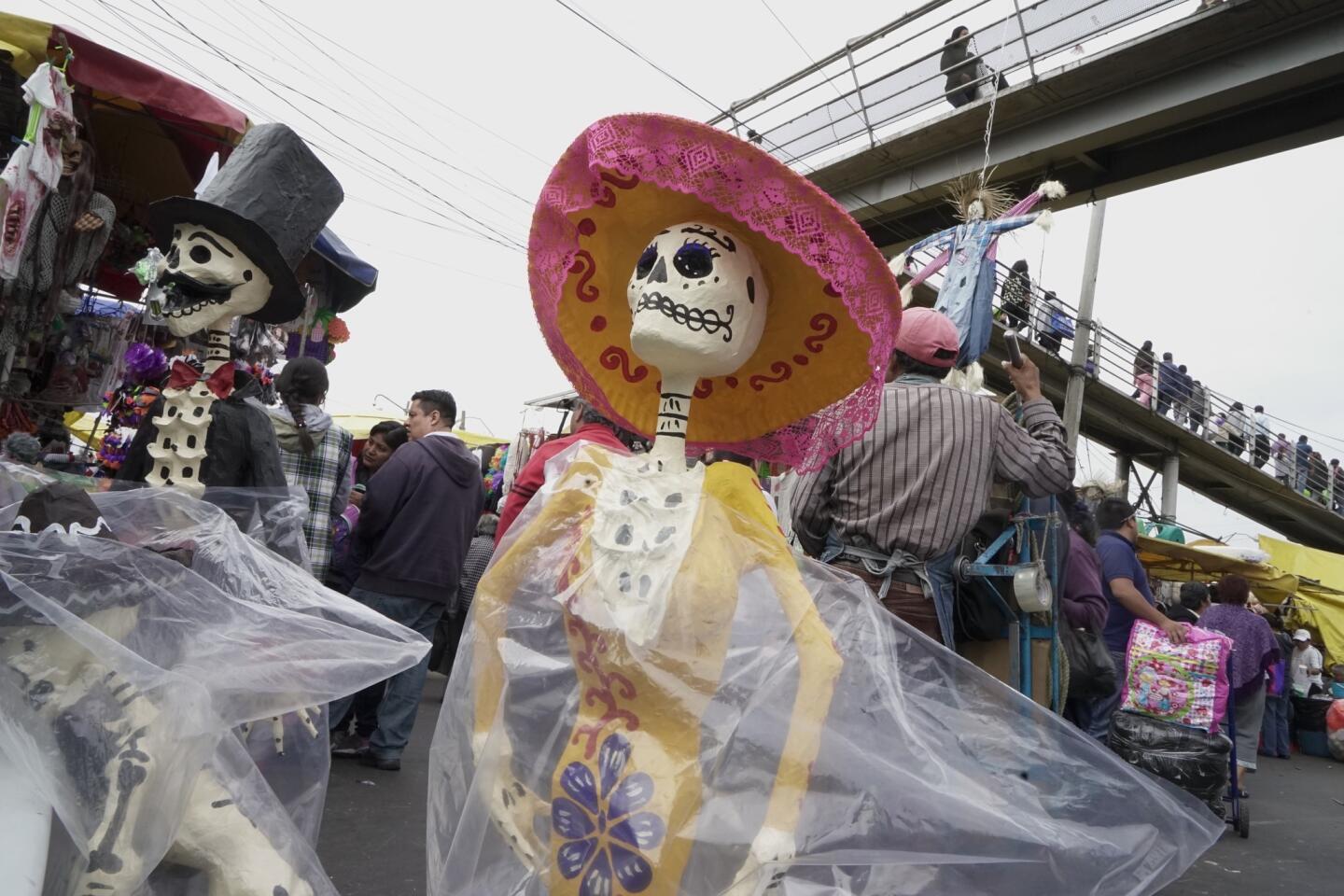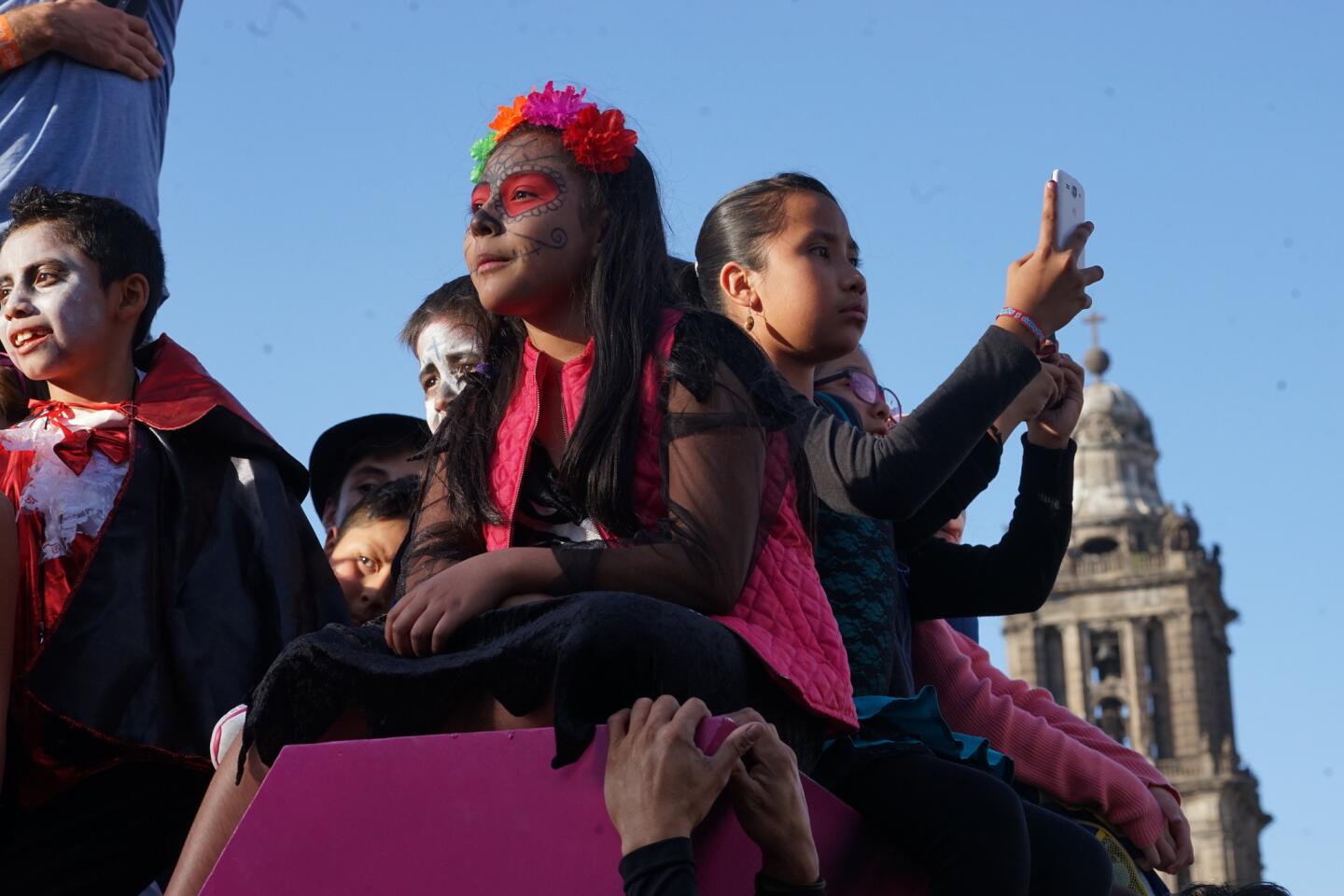How Mexico combines Halloween and Day of the Dead into one surreal celebration

In Mexico, customs originating in Europe and the indigenous world often meld in a surprisingly seamless fashion.
- Share via
Reporting from mexico city — Mexico’s beloved grande dame of death, a stylishly attired skeleton named La Catrina, her grinning skull topped with trademark hat, has company in the market stands here: Hollywood extraterrestrials, Batman and other superheroes, along with sundry witches and monsters.
“Ratas baratas! Diez pesos!” announces a vendor holding a bundle of plastic rodents by their long tails, each selling for 10 pesos, or just over 50 U.S. cents. “Cheap rats!”
In Mexico, customs originating in Europe and the indigenous world often meld in a surprisingly seamless fashion.
So it is with Halloween, a tradition born in Europe and transported here from the United States, and Day of the Dead, a Mexican remembrance of the deceased with pre-Hispanic origins.
The two holidays — Halloween on Oct. 31 and Day of the Dead two days later — have fused here into a multi-day, sometimes surreal celebration and a bonanza for pinata and mask makers, costume fabricators and bakers specializing in sugary offerings for the departed. At the sprawling Sonora Market here, the final shopping days are frantic.
On Saturday, Mexico City held its first Day of the Dead parade, a runaway success that saw the route through downtown jammed with more 250,000 people, many in full Halloween mode, decked out in skeleton regalia, their faces painted like skulls.
The inspiration was pure Hollywood — last year’s James Bond movie, “Spectre,” featured a stunning opening scene of an imagined Day of the Dead street festival in Mexico City. Officials moved to turn fiction into a marketing jackpot, creating an extravaganza of stylized death to draw tourists and showcase the Mexico brand.
Across all social strata, many Mexicans dress up for Halloween, also known as Noche de Brujas, or Night of the Witches, then prepare altars known as ofrendas for deceased ancestors and loved ones.
“My mother liked to put up very big ofrendas with a lot of decoration,” says Alejandro Diaz Fernandez, 46, a school bus driver who has arrived at Sonora Market’s “auditorium,” a room the size of an airplane hangar, to load up on chocolate skulls, incense and marigolds. The orange flowers, known as cempasuchil, are ubiquitous in the run-up to Day of the Dead.
Those items will be placed in a home altar for his mother, who died two years ago, as well as one for his late brother.
The family also is looking for a Halloween costume for Diaz’s 4-year-old daughter, Sofia. She chooses a vampire outfit, despite her mother’s preference for a witch get-up.
As the family browses, a recorded announcement on a loudspeaker informs shoppers that the market can provide “all their needs” for the two holidays, listing everything from candy skulls for Day of the Dead altars to fake blood, Frankenstein jack-o’-lanterns and spiderwebs for Halloween.
While some of the traditions are Mexican and others are imported, many of the products are stamped “Made in China.”
Few see much conflict between the celebrations, both of which play to a fascination with mortality. That Mexicans can find humor in death seems clear from the enduring popularity of La Catrina — the ever-elegant skeleton figure whose image was created more than a century ago as an artist’s critique of Mexicans who pretentiously embraced the aristocratic ways of the Europeans.
“I don’t see any problem with the mixing the two holidays,” says Norma Olvera, a third-generation vendor at Sonora Market who specializes in pinatas, some related to Halloween, others to Day of the Dead. “At the end of the day,” she adds, “we are all human beings. And our cultures mix as well.”
Locked in stiff competition with one another, vendors often use offbeat humor in their search for an edge.
“These are not spiders, they are tarantulas,” insists Eduardo Gallardo Flores, who is selling furry, realistic arachnids measuring 4 inches across, all made by his mother in the state of Hidalgo.
“Buy one for your mother-in-law!” he advises one gawker.
It’s all in fun, but some of the market displays feel a bit too close to Mexico’s current reality, starting with a pair of scarecrows hanging from a viaduct just outside an entrance.
Intentional or not, the scene calls to mind the well-known footage of dead bodies strung from bridges in Ciudad Juarez and other hot-spots in the battles among the country’s drug cartels.
Gruesome violence is a staple of the daily news, including the story this month of six bloody men who were left on a street outside the city of Guadalajara. Their attackers had chopped off their hands.
At the market, shoppers browse through trays of bloody fake limbs as if they were inspecting sweets at a candy counter.
“How much for the fingers?” asks a bargain-hunter, squeezing one of the fake digits. “Fifteen pesos each,” replies the shopkeeper, 23-year-old Edgar Acosta Martinez.
Perhaps the pseudo-horror offers some form of relief from the true-life mayhem unfolding daily in the streets.
“We sell this stuff because it causes a lot of fear and that’s what people want these days,” says Acosta Martinez, whose family runs a market stall specializing in bloody fingers and detached legs and hands.
Like a thespian preparing for a demanding role, Acosta spends an hour each day getting into character. He emerges with plastic eyes, scissors protruding from his neck, the sharp lid of a can embedded in his head, a pencil perforating his left wrist, a nail stuck in his right arm and blood leaking from sundry body parts.
“People want to feel terror,” Acosta explains.
Edgar’s mother, Sara Acosta, hands a mutilated finger to her 2-year-old grandson Esteban, sitting in the family market stall. “He’s not afraid at all,” she says. “He likes it!”
Cecilia Sanchez of The Times’ Mexico City bureau and special correspondent Liliana Nieto del Rio contributed to this report.
ALSO
‘El Chapo’ says he’s depressed by prison life, complains of ‘psychological torture’
64 bottles of tequila, Halloween costumes and maybe a ghost at El Coyote
What it was like to watch Trump talk about ‘bad hombres’ in a Mexican BBQ joint
More to Read
Sign up for Essential California
The most important California stories and recommendations in your inbox every morning.
You may occasionally receive promotional content from the Los Angeles Times.
